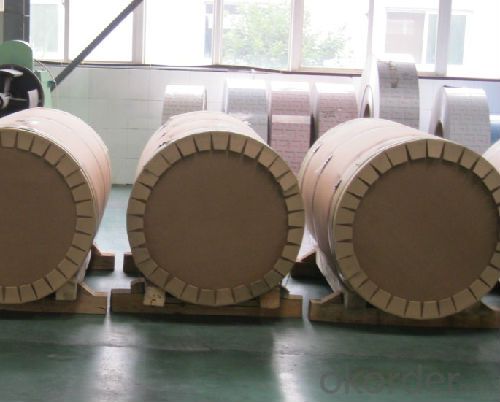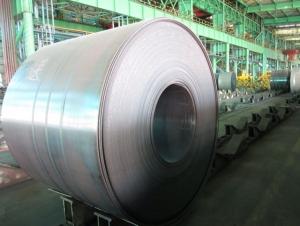Stainless Steel Cold Rolled Plates Stocks With Best Price
- Loading Port:
- Shanghai
- Payment Terms:
- TT or LC
- Min Order Qty:
- 5 m.t.
- Supply Capability:
- 5000 m.t./month
OKorder Service Pledge
OKorder Financial Service
You Might Also Like
1.Structure of Product Description
Stainless steel sheet, stainless steel plate, stainless steel slabs are all widely used in the field of construction field and decoration field, etc. There are many different grades, such as: 200 series, 300 series, 400 series, 900series, etc. The detailed grade are as follows: 201, 202, 301, 304, 316, 410, 420, 430, etc.
The surface is including 2B, BA, Mirror Finish, Checkered, etc.
2. Main features of the product
a. Competitive price
b. Frist-Class Service.
c. Shortest service.
3. Image.

4. Product detailed sizes:
1000mm*2000mm,1250mm*2500mm,1500mm*3000mm, etc.
5. FAQ:
What is the quality standard?
---Usually our standard is GB3880-2006 or else.
What is the width range?
---Normally it is around 3 tons/each size.
How many tons did you export in one year?
---Normally it is around 9000 tons totally.
Where is your client from?
---Normally it is from Japan, USA, ENGLISH, SINGAPORE, ETC.
What is your mainly products?
---Normally they are stainless steel sheet, stainless steel coil, stainless steel checkered sheet, stainless steel mirror finished sheet, color coated stainless steel sheet, etc.
- Q:Are stainless steel sheets fire resistant?
- Stainless steel sheets have excellent fire resistance properties. Due to their high melting point and low thermal conductivity, stainless steel is able to withstand high temperatures for prolonged periods of time without undergoing significant structural changes or losing their strength. This makes stainless steel sheets highly resistant to fire and heat damage. Additionally, stainless steel does not release toxic fumes when exposed to fire, which further enhances its safety in fire-prone environments. As a result, stainless steel sheets are commonly used in applications where fire resistance is a critical requirement, such as in the construction of fire doors, fire escapes, and fire-resistant enclosures.
- Q:Are stainless steel sheets good for heat exchanger tubes?
- Yes, stainless steel sheets are commonly used for heat exchanger tubes due to their excellent heat transfer properties and corrosion resistance. Stainless steel has a high thermal conductivity, allowing for efficient heat transfer between fluids. Additionally, it has exceptional resistance to corrosion, which is crucial for heat exchangers that often come into contact with liquids or gases that can be corrosive. The durability of stainless steel sheets also ensures longevity and reliability for heat exchanger tubes, making them a popular choice in various industries such as chemical processing, power generation, and HVAC systems.
- Q:Are stainless steel sheets resistant to scaling at high temperatures?
- Stainless steel sheets, in general, possess resistance against scaling when exposed to high temperatures. This resistance is attributed to the elevated chromium content within stainless steel, which generates a protective oxide layer on the surface upon oxygen exposure. This oxide layer acts as a barrier, effectively hindering further oxidation and scaling of the material. Nevertheless, the extent of scaling resistance may fluctuate based on the particular grade and composition of stainless steel, as well as the temperature and duration of exposure. In exceedingly high-temperature surroundings, stainless steel might still encounter some degree of scaling; however, it typically exhibits greater resistance in comparison to alternative materials.
- Q:How are stainless steel sheets produced?
- Stainless steel sheets are produced through a process called hot rolling, where stainless steel ingots are heated and passed through a series of rollers to reduce their thickness and improve their surface finish. This continuous rolling process creates long sheets of stainless steel, which are then cooled and cut into desired lengths. The sheets may undergo further processing, such as annealing or surface treatment, before being packaged and shipped for various applications.
- Q:Can stainless steel sheets be used for architectural purposes?
- Architectural purposes can utilize stainless steel sheets. This versatile material is highly resistant to corrosion, making it perfect for outdoor applications. Its use in architectural projects includes building facades, roofs, cladding, and decorative elements. Stainless steel sheets present several advantages for architectural purposes. Firstly, they possess a contemporary and polished appearance that can enhance a building's aesthetics. With various finishes available, such as brushed, mirrored, and textured, creative design possibilities are abundant. Furthermore, stainless steel sheets are durable and long-lasting. They can endure harsh weather conditions, UV radiation, and pollution, guaranteeing the architectural elements' longevity. Additionally, stainless steel is low-maintenance, requiring minimal cleaning and upkeep. Moreover, stainless steel offers a sustainable option for architectural purposes. It is completely recyclable, making it an environmentally friendly choice. The recycling and reuse of stainless steel sheets do not compromise their properties, thereby reducing the environmental impact of architectural projects. In conclusion, stainless steel sheets are a fitting choice for architectural purposes due to their corrosion resistance, aesthetic appeal, durability, and sustainability. They provide a wide array of design options and can withstand various elements, making them a reliable choice for both indoor and outdoor architectural applications.
- Q:The difference between 304J1 stainless steel plate and 304 stainless steel plate
- 1. characteristics and uses: steel grades, characteristics, uses304, excellent formability, deep drawing applications - tableware, vacuum cups, sinks, pots and other deep drawing purposes
- Q:Can stainless steel sheets be used for decorative staircases?
- Indeed, decorative staircases can make use of stainless steel sheets. With its versatility, stainless steel emerges as a highly sought-after material in architectural and interior design domains, offering both aesthetic charm and long-lasting strength. When employed in decorative staircases, stainless steel sheets impart a polished and contemporary feel, elevating the overall allure of the staircase. Moreover, stainless steel's resistance to corrosion and staining renders it perfect for high-traffic zones such as staircases. Not only that, but it also boasts easy cleaning and maintenance, magnifying its appropriateness for ornamental intentions.
- Q:Are stainless steel sheets suitable for medical implants?
- Stainless steel sheets are indeed appropriate for medical implants. This is because stainless steel, which is commonly utilized in medical implants, possesses desirable qualities such as resistance to corrosion, strength, and biocompatibility. These sheets can be shaped and sized in various ways, making them adaptable for different types of implants. Moreover, stainless steel has been extensively researched and proven to be safe for long-term implantation in the human body. In addition, it is cost-effective when compared to alternative implant materials. However, it is crucial to emphasize that the particular grade of stainless steel and the surface finish play pivotal roles in determining its suitability for medical implants. The grade of stainless steel must meet biocompatibility and corrosion resistance standards, while the surface finish must be smooth to minimize the risk of infection and encourage proper tissue integration. In conclusion, stainless steel sheets are a dependable and widely utilized material for medical implants.
- Q:Can stainless steel sheets be used for pharmaceutical storage cabinets?
- Indeed, pharmaceutical storage cabinets can make use of stainless steel sheets. Stainless steel possesses a remarkable resistance to corrosion, rendering it an excellent choice of material for pharmaceutical storage due to the necessity for sterile and hygienic environments. Moreover, stainless steel proves effortless to cleanse and uphold, guaranteeing the absence of contaminants within the storage cabinets. Furthermore, stainless steel demonstrates durability and longevity, thereby offering a dependable and secure storage solution for pharmaceuticals.
- Q:How do you prevent discoloration or staining on stainless steel sheets?
- To prevent discoloration or staining on stainless steel sheets, there are several steps one can take. First, it is important to clean the sheets regularly using mild soap or detergent and warm water. Avoid abrasive cleaners or scrub brushes that could scratch the surface. After cleaning, rinse thoroughly with clean water and dry with a soft cloth to prevent water spots. In addition, it is crucial to avoid using harsh chemicals like bleach, ammonia, or chlorine-based cleaners on stainless steel sheets. These chemicals can cause discoloration or staining. Instead, opt for stainless steel-specific cleaners or natural alternatives such as vinegar or lemon juice. Proper storage is also essential. Stainless steel sheets should be kept in a clean and dry environment to prevent exposure to moisture or humidity. Moisture can lead to corrosion or rust, resulting in discoloration. If the sheets are stored outdoors, make sure to adequately cover them to protect against rain or snow. Applying a protective coating or sealant on stainless steel sheets can help prevent discoloration or staining. There are various products available specifically designed for stainless steel protection. It is important to follow the manufacturer's instructions for application and reapplication if necessary. Furthermore, it is important to avoid contact between stainless steel sheets and other reactive metals such as iron, copper, or aluminum. When these metals come into contact with stainless steel, a chemical reaction called galvanic corrosion can occur, leading to discoloration and staining. To prevent this, ensure separation or isolation between stainless steel and reactive metals. Regular maintenance is crucial in preserving the appearance and integrity of stainless steel sheets. Regularly inspect the sheets for any signs of discoloration, staining, or damage. Address any issues promptly to prevent further deterioration. If stubborn stains are present, use a non-abrasive stainless steel cleaner and a soft cloth to gently rub the affected area in the direction of the grain. By following these preventive measures, the appearance and integrity of stainless steel sheets can be maintained, ensuring they remain free from discoloration or staining for an extended period of time.
1. Manufacturer Overview |
|
|---|---|
| Location | |
| Year Established | |
| Annual Output Value | |
| Main Markets | |
| Company Certifications | |
2. Manufacturer Certificates |
|
|---|---|
| a) Certification Name | |
| Range | |
| Reference | |
| Validity Period | |
3. Manufacturer Capability |
|
|---|---|
| a)Trade Capacity | |
| Nearest Port | |
| Export Percentage | |
| No.of Employees in Trade Department | |
| Language Spoken: | |
| b)Factory Information | |
| Factory Size: | |
| No. of Production Lines | |
| Contract Manufacturing | |
| Product Price Range | |
Send your message to us
Stainless Steel Cold Rolled Plates Stocks With Best Price
- Loading Port:
- Shanghai
- Payment Terms:
- TT or LC
- Min Order Qty:
- 5 m.t.
- Supply Capability:
- 5000 m.t./month
OKorder Service Pledge
OKorder Financial Service
Similar products
New products
Hot products
Hot Searches
Related keywords





























